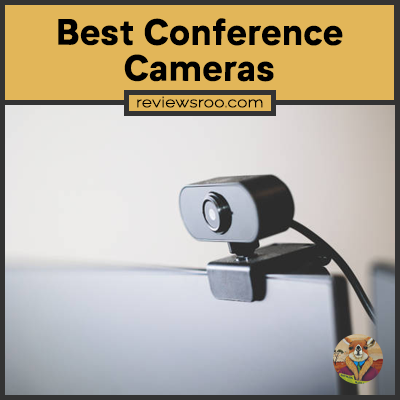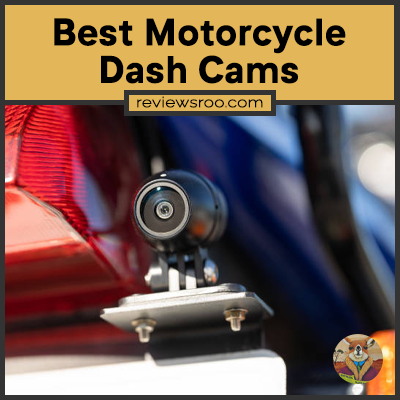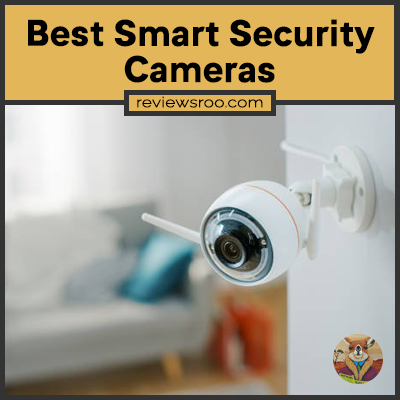Best Conference Cameras
Video conferencing has become a major part of our lives. In fact, it’s estimated that over 4 billion people regularly use video conferencing for work, school, and socializing.

With this many users, having the best conference camera is crucial for success. That’s why we’ve put together this comprehensive guide to the best conference cameras available today.
In this article, you’ll find all the information you need to make an informed decision when purchasing a conference camera. We’ve evaluated everything from megapixel resolution to zoom capabilities and more – so you can be sure you’re getting the right device for your needs. Plus, we discuss budget-friendly options as well as top-of-the-line models so everyone can find something ideal for their situation.
So, if you’re in the market for a new conference camera, then look no further! This article will help you get started on your search and ensure that you find a device that meets all your expectations. Read on to learn more about choosing the best conference camera for your needs!
What To Look For When Shopping For Conference Cameras
The conference room is like a stage – the right camera can capture it all. Choosing the right one requires thought and research. It’s a matter of considering the space, technology, and budget.
When shopping for conference cameras there are several things to consider. Lighting is key – make sure you have enough of it so everyone can be seen clearly. Range is also important; you’ll want a product with a wide angle lens so everyone in the room can be included in the frame. Quality matters too – if you plan to stream audio or video, look for a product that will provide sharp, crisp images. Lastly, don’t forget about your budget; there are high-end options available that won’t break the bank.
5 Best Conference Cameras For Smaller Meeting Spaces
Choosing the right conference camera for your meeting space is essential. Size and quality of image will be key factors to consider. Here we look at five of the best conference cameras for smaller meeting spaces.
The first camera on our list is the Logitech Meetup, a high-performance all-in-one video conferencing solution. It offers superb HD video and audio quality, plus a range of features such as pan/tilt/zoom, plus remote control capabilities. Secondly, we have the AVer VC520 – a compact yet powerful USB conference camera that delivers crystal clear visuals and excellent sound quality.
Thirdly, we have the Huddly Go – a highly flexible plug-and-play camera that allows for quick setup and hassle-free usage without any software installation. Fourthly, we’ve got the Poly Studio X50 – an all-in-one 4K UHD system that delivers an immersive collaboration experience with crystal clear audio and video. Finally, there’s the Yealink CP960 – an advanced business collaboration system with built in microphone array capable of supporting up to 8 microphones for larger groups or rooms.
These are just some of our top choices when it comes to choosing a conference camera for smaller meeting spaces – but what about when it comes to larger ones?
5 Best Conference Cameras For Large Meeting Spaces
Conference cameras can be used for large meetings too. Many have features that make it easier to capture audio and visuals in larger spaces. Here’s a look at five of the best conference cameras for larger meeting rooms.
The Logitech Rally Plus offers an impressive field of view and ultra-high resolution capture with its 4K sensors. It also has an expansive mic array that picks up sound from every direction without distortion. The AVer VC520 PRO is great for larger meeting spaces, offering 1080p resolution and a wide 70° field of view with adjustable PTZ (pan, tilt, zoom) control. Additionally, many users love the Logitech Meetup for its exceptional audio quality and ability to connect up to 15 people in the same room without any latency issues.
The EagleEye Cube is another excellent option for larger meeting rooms, as it has a 120° field of view, 4x digital zoom capabilities, and built-in AI technology to detect faces during video conferencing sessions. Lastly, the Poly Studio X50 packs a lot into a small package by offering 1080p video resolution with 12x digital zoom and integrated audio speakers with echo cancellation technology.
These conference cameras are great options to help keep business meetings productive in large spaces too.
Tips For Using Conference Cameras In Home Offices
The theory is that conference cameras are better suited for use in large meeting spaces than at home. But is this really true? It’s possible to leverage conference cameras for home office use just as effectively. Here are some tips for using conference cameras in home offices.
First, adjust the angle of the camera to make sure it is capturing everyone in the room. When working from home, it can be easy to forget about the other people who may be on the call with you. Make sure they are seen and heard too! Additionally, ensure that your device is properly connected and functioning correctly before joining any meetings. Test out audio settings to make sure your mic is picking up sound clearly and easily, so you don’t have any problems during important calls.
Lastly, set up a nice backdrop behind you if there’s potential for video calls. This will give your space a professional look and feel while also minimizing distractions during meetings. With these tips in mind, home offices can benefit from using conference cameras just as well as larger meeting spaces do!
Benefits Of High-End Conference Cameras
Who would have thought that high-end conference cameras could be so beneficial? After all, they can be a pricey purchase option. But, as it turns out, these cameras can make all the difference for people who need to stay connected in their home offices.
The truth is, investing in high-end conference cameras can provide users with an array of features and benefits that just aren’t available with budget models. High-end models often come with wide angle lenses and enhanced lighting options, enabling you to capture clear images no matter the conditions. Plus, many offer integrated zoom settings, allowing you to get closer to participants without having to move around your physical space. And let’s not forget about sound quality – many of these models come equipped with noise reduction technology that helps filter out background noises like typing or talking pets.
Bottom line: while there may be a hefty price tag attached to these types of conference cameras, they are worth it if you want the best results while connecting remotely from your home office. Now we’ve got a better understanding of the benefits associated with high-end conference cameras, let’s take a look at how to choose the right one for your needs.
Understanding The Different Types Of Conference Cameras
Understanding conference cameras is like navigating a complicated maze. There are various types and features that can be overwhelming to grasp; however, it’s essential to know the difference between each type in order to find the perfect camera for any setting.
The most popular types of conference cameras include:
- PTZ (pan-tilt-zoom): these cameras have the ability to pan, tilt, and zoom remotely. They are usually mounted on a wall or ceiling and have great coverage of large meeting rooms.
- USB: these plug directly into computers or laptops with a USB connection. They’re convenient as they don’t require any additional hardware and are good for smaller spaces or one-on-one meetings.
- Dedicated: these are standalone units that don’t require additional equipment or setup. They often come with extra features such as optical zoom and 4K resolution, making them ideal for larger conferences.
No matter what type of camera you choose, it’s important to consider budget, quality of image, and audio capabilities when selecting the right camera. Every conference has its own unique requirements so it’s important to do your research before settling on one model over another. With the right knowledge and research, you’ll be able to find the perfect camera for your needs in no time at all. Meticulous preparation is key when it comes to setting up a conference camera for maximum effectiveness; this next section will discuss just that.
How To Set Up A Conference Camera For Maximum Effectiveness
Setting up a conference camera for maximum effectiveness? Piece of cake! Or so you’d think. As it turns out, there’s a lot more to getting the most out of your conference camera than meets the eye. But fear not, with these easy-to-follow steps, you’ll be streaming in no time!
First things first: take a deep dive into your conference camera’s settings and make sure all the necessary controls are adjusted correctly. You’ll want to pay special attention to the focus, brightness, contrast, white balance and other such controls. Once those are set up correctly, move on to plugging in the right cables and ports. After that’s all done, you’ll need to adjust the video quality based on bandwidth and available resources. It may sound like a daunting task but trust me – it won’t be long before you have things running smoothly!
TIP: Don’t be afraid to experiment with different settings – sometimes a few tweaks can make all the difference when it comes to getting that perfect live stream.
What Accessories Are Needed For Conference Cameras
Meeting rooms are becoming increasingly digitalized. According to a recent survey, 93% of organizations have adopted video conferencing technology for remote communication. To get the most out of your conference camera, you’ll need some essential accessories.
For starters, you’ll need a microphone and speakers so everyone can be heard clearly. Recording capability is also important for saving important conversations. You may also want to invest in a PTZ (pan-tilt-zoom) camera that allows users to control their view of the meeting room remotely. Additionally, depending on the size of your conference room, an external monitor might be necessary for displaying visuals or presentations.
It’s essential to ensure all your equipment works together with your conference camera before hosting any virtual meetings. This will help prevent technical glitches from ruining the entire session.
Troubleshooting Common Issues With Conference Cameras
Troubleshooting common issues with conference cameras is like finding a needle in a haystack. But, with the right guidance, it doesn’t have to be a daunting task. Let’s dive into these problems and figure out how to solve them.
First, check your connections. Make sure all cables are plugged in securely and that your internet connection is strong enough for streaming video and audio. If your camera has an Ethernet port, make sure it is connected using an Ethernet cable for optimum performance. If the issue persists, restart both the camera and the computer it is connected to.
Next, adjust settings on both devices to ensure they are compatible with each other. Check the manual or online user guides for detailed instructions on how to properly configure them to work together without any issues. Also remember that different operating systems may require different settings changes within their own software configuration menus as well. Once you’ve checked everything, you should be good to go!
Cost Vs. Quality: Finding The Right Balance When Choosing A Conference Camera
Choosing the right conference camera can be tricky. Cost vs. quality is a major consideration: you want to find a balance between them. High-end cameras have great features, but can be expensive. Cheaper cameras often lack features and reliability.
So how do you decide? Research is key: read reviews and look for recommendations from other users. Look at what features are important to you, then compare the cost with the performance of each camera. Make sure it meets your needs before committing to any purchase.
Weighing up the costs and benefits will help you make an informed decision about which camera is best for your conferences.
Frequently Asked Questions
What Is The Best Way To Compare Different Types Of Conference Cameras?
When it comes to finding the best conference cameras, the question is, how do you compare? It’s a dilemma that faces many people. Weighing price against features and quality can be tricky. The trick is to start by considering what your needs are. What features are most important for your purpose? Do you need wide angle capabilities or will standard offer sufficient coverage?
Do you need high-quality sound or is basic enough? Once you’ve identified what features meet your needs, then you can begin narrowing down the choices. Comparing conference cameras requires some research. Read reviews of different models and weigh their pros and cons against each other. Compare prices and look for any special offers or discounts available. If possible, test out different models in person before making a purchase decision.
Think about how easy they are to use as well as their technical specifications. By doing this research into various conference cameras, you’ll be able to select the one that best fits your requirements and budget. It may take some time but in the end, it will be worth it when you find the perfect camera for your needs.
What Are The Benefits Of Using A Wireless Conference Camera?
Wireless conference cameras have become increasingly popular in recent years, with a survey of IT departments showing that 37% are now using them for corporate meetings. This is hardly surprising when you look at the benefits they offer. First and foremost, wireless conference cameras provide convenience and flexibility. Teams can collaborate on projects without being in the same location, while of course reducing travel costs. They also make it easier to switch between rooms quickly and effectively, allowing teams to move freely during presentations or meetings.
In addition, wireless conference cameras help to improve communication quality. With no cables or wires getting in the way, audio and video quality is maintained at a much higher level than traditional setups require. This helps to ensure that all participants are able to hear each other clearly and without interruption.
What’s more, these devices are incredibly easy to set up and use. Most models come with intuitive software interfaces that make them simple to install and configure even for those who are not tech-savvy. And since they’re wireless, there’s no need for extra hardware or complicated installation processes like with wired solutions.
Overall, wireless conference cameras offer several advantages over traditional wired solutions for remote collaboration and presentations – from improved communication quality to greater convenience and flexibility – making them an ideal choice for any organization looking to take their meetings online.
How Can I Ensure My Conference Camera Is Secure?
Security is of utmost importance when using conference cameras. It’s essential to take the necessary steps in order to ensure your camera is secure. Here are a few tips to help:
- Disable default passwords – Ensure all default passwords have been changed and updated with strong, unique credentials.
- Use encryption protocols – Utilize encryption protocols such as TLS or SSL to secure data transfers between the camera and other devices.
- Keep software up-to-date – Regularly check for updates on your software and firmware, and install them promptly when needed.
- Network security – Implement firewalls, antivirus or antimalware protection, and only allow trusted users access to the network.
- Physically secure the camera – Place the camera in a secure area so that it’s not easily accessible by anyone unauthorized.
By taking these steps, you can rest easy knowing your conference camera is secure. Implementing these measures will help keep data safe and protect against potential threats.
How Often Should I Upgrade My Conference Camera?
Have you ever wondered how often you should upgrade your conference camera? In an age of rapidly advancing technology, it’s important to ensure that your conference camera is up-to-date and performing optimally.
Upgrading your conference camera depends on various factors, such as the type of use and the environment in which it is used. If you are using the camera for daily business calls, or if the environment changes often, then it is recommended to upgrade every two years. This allows you to stay ahead of any technical issues and have access to all the latest features. For less frequent use, such as once a month or annually, then upgrading every three to five years may be more appropriate.
When making any decision about upgrading your conference camera, make sure you weigh up all your options first before committing to a purchase. Consider what features are necessary for your needs and budget accordingly. Just remember that having an outdated camera could lead to ineffective communication and wasted time during video conferences; so ensuring that you have an up-to-date device is essential for success.
What Factors Should I Consider When Purchasing A Conference Camera For Multiple Meeting Rooms?
Choosing the perfect conference camera for multiple meeting rooms can be an absolute nightmare. It’s a task that can take you to the edge of insanity! You want to make sure that your choice is the best possible one, and there are several factors to consider. Here is a list of 3 crucial elements every buyer should prioritize:
- Quality: A top-notch conference camera should offer crisp images and clear audio so everyone in the meeting room has a pleasant experience.
- Ease of Use: The most perfect camera won’t be much help if it’s too complicated to use. Look for features like auto-focus and plug & play capabilities that will make life easier.
- Durability: If you’re investing in multiple cameras, you want them to last. Make sure they come with a warranty, have strong construction, and are designed to handle heavy usage.
When researching different types of cameras, read customer reviews and ask around for recommendations from other businesses or colleagues who have already gone through this process themselves. Don’t forget to also check out any special offers or discounts that could help you save some money without sacrificing quality. All these steps will give you peace of mind knowing that your new conference cameras will bring success to all your meetings!
Conclusion
When it comes to conference cameras, there’s no one-size-fits-all solution. Each person’s needs and budget must be taken into consideration before making a purchase. It’s important to compare different types of cameras and consider the benefits of using a wireless model. Security is also an essential factor to consider, and upgrading regularly can help ensure your camera remains secure.
Still, some may worry that investing in a high-quality conference camera is too expensive. But remember that technology evolves quickly, and if you choose an outdated model now, you’ll end up having to upgrade soon anyway. Investing in the best possible camera for your needs now will save money in the long run – plus, it’ll provide better quality video for all your meetings!
So don’t let cost deter you from finding the perfect conference camera for you. Do your research, consider all factors carefully, and invest in the best quality camera for your budget – and I guarantee that you won’t be disappointed with the results!





